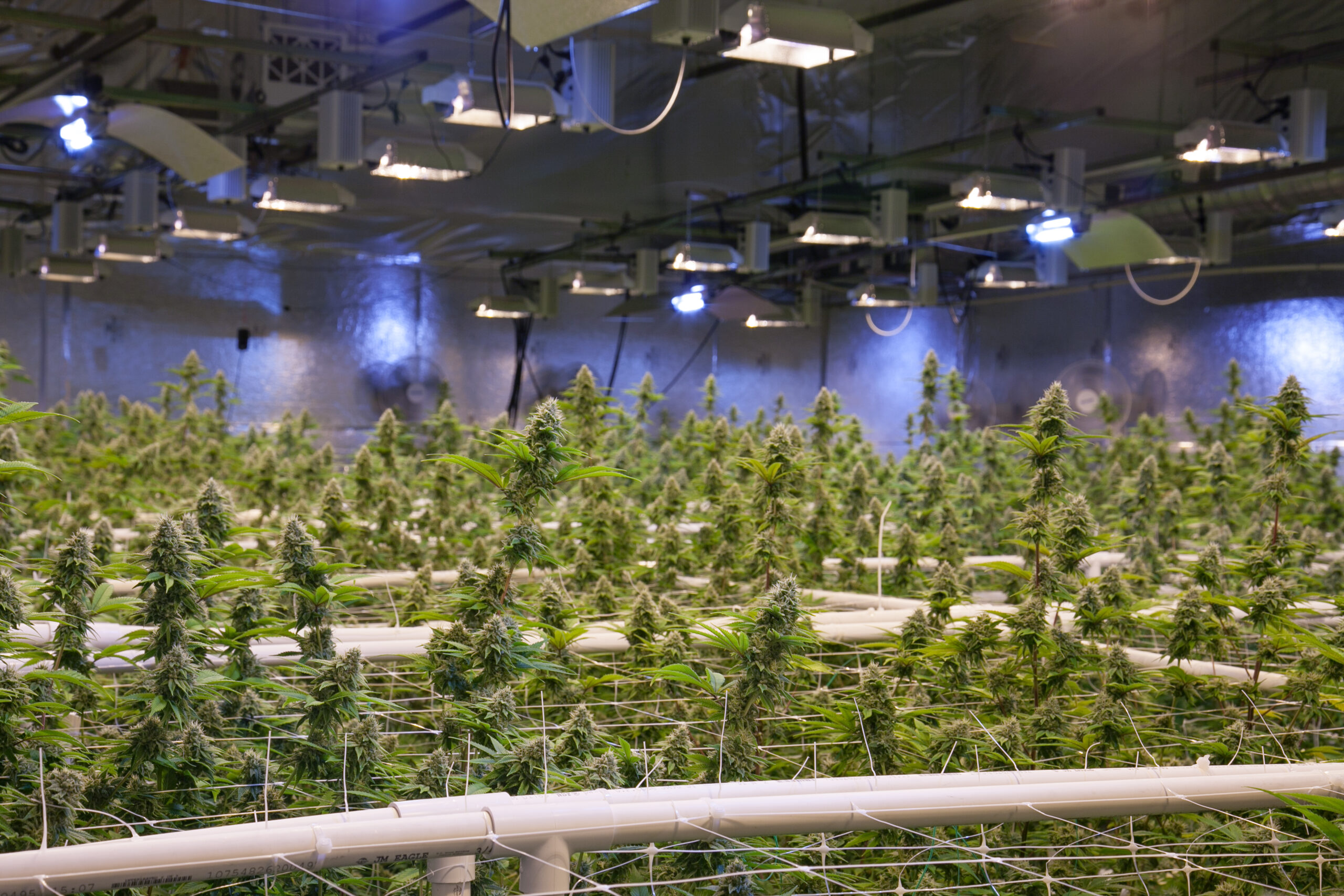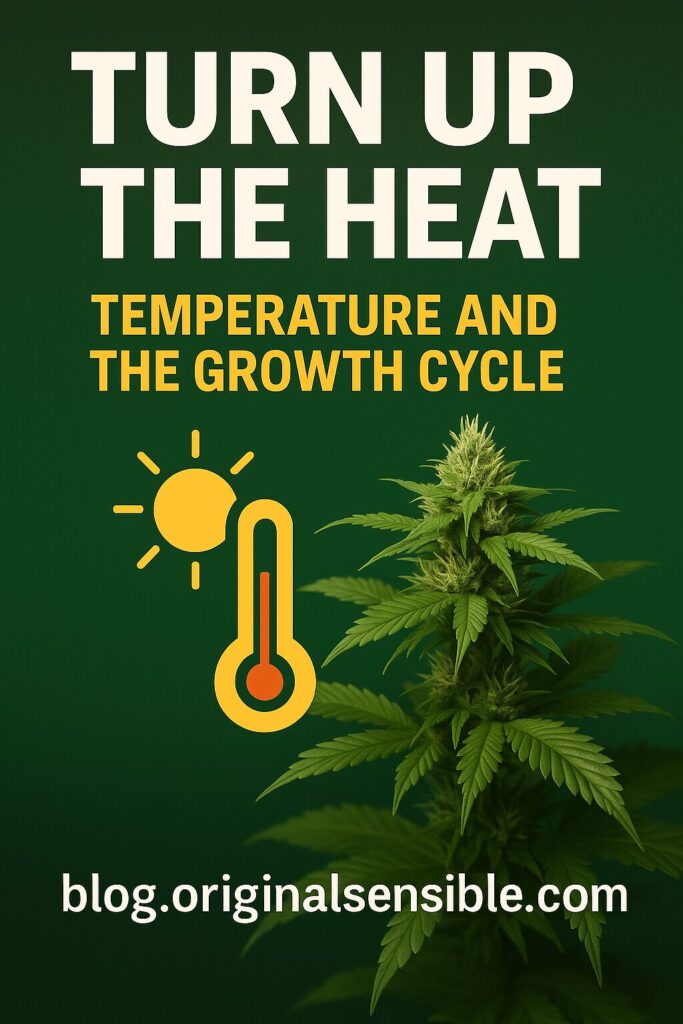
Temperature has a profound effect on plant life. It influences everything from the rate of photosynthesis to water uptake, nutrient absorption, enzyme activity, and the timing of key growth stages. In short, if your grow environment is too hot or too cold, your plant will struggle, regardless of how well you meet its other needs, and even if you have the best genetics.
Every plant has a preferred temperature range. For most common cultivars, the sweet spot sits between 20–28°C during the day, with a slight drop at night. Consistency within this range promotes strong cell development, balanced metabolism, and optimal growth.
Why does it promote these things?
Because within this optimal thermal zone, all the chemical processes that fuel plant life operate at peak efficiency. Cells divide faster, proteins form correctly, and energy flows smoothly, just like a car engine cruising in the right gear at the right temperature. Outside this range, things begin to break down.
Why Cold Slows Down Growth
When temperatures fall too low, essential plant processes begin to slow down. That’s because enzymes, specialised proteins responsible for triggering every major biochemical reaction in the plant, become less active at cooler temperatures.
What are enzymes, and why do they slow down in the cold?
Enzymes are biological catalysts. Think of them as the plant’s microscopic workforce, each one assigned to a specific task like breaking down sugars, assembling proteins, or absorbing nutrients. But enzymes are temperature-sensitive. At lower temperatures, they move and interact more slowly, reducing their ability to carry out reactions efficiently.
This slowdown hits several core systems:
- Photosynthesis, the process where plants convert light, water, and CO₂ into sugars, drops dramatically.
- Respiration, the process of breaking down those sugars for energy, slows too.
- Nutrient uptake suffers, because transport proteins in root cells (also enzyme-based) can’t function effectively.
Why does nutrient uptake depend on enzyme activity?
Because nutrient absorption involves active transport, moving minerals against concentration gradients. This process requires energy and the assistance of membrane-bound enzymes and proteins, which work best at optimal temps.
When this entire metabolic engine starts running sluggishly, the impacts show up fast:
- Stunted growth
- Curled or discoloured leaves
- Slowed root development and uptake
- Increased risk of damping off or fungal infection due to prolonged wet conditions
Why Heat Causes Stress
Excessive heat can be just as damaging, if not more. High temperatures increase transpiration rates, leading to rapid moisture loss through the leaves. In response, the plant closes its stomata to conserve water.
What are stomata and how do they work?
Stomata are tiny pores on the surface of leaves that open and close to regulate gas exchange, allowing CO₂ in and O₂ out, and can only be seen when looking through a microscope. They look very much like tiny sets of lips on the underside of the leaf. They also release water vapour through transpiration. When heat causes too much water loss, the plant closes these pores to prevent dehydration.
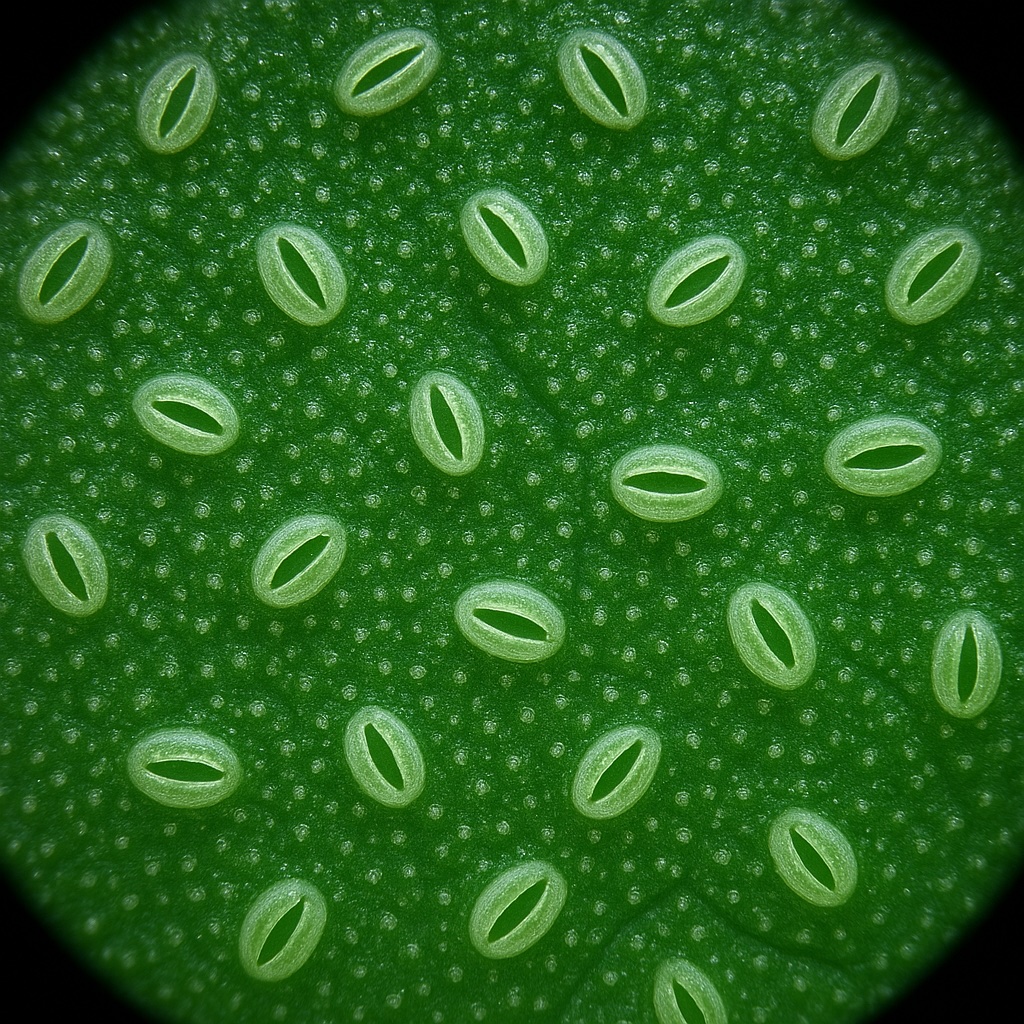
But shutting the stomata also halts CO₂ intake, stopping photosynthesis, the process that powers all growth. Without CO₂, the plant can’t create energy. It enters a survival mode, not a growth mode.
Other effects of excessive heat:
- Nutrient uptake is reduced, especially for calcium and magnesium, which are essential for structural development and photosynthetic stability.
- Enzymes begin to denature (change shape), which stops them from functioning altogether.
- Pests and pathogens thrive in hot, humid conditions, leading to infestations and mould.
- Hormonal signals are thrown off, causing early flowering or hermaphroditism in sensitive strains.
The Hidden Danger: Temperature Swings
Managing temperature isn’t just about keeping it warm or cool. It’s about keeping it stable. Sudden spikes or drops, even for a few hours, can shock your plant’s internal systems. This triggers a stress response that releases hormones like ethylene or abscisic acid, disrupting growth, delaying flowering, and reducing yield.
Why is this especially bad for autoflowers?
Because autoflowers operate on a genetic timer, not a photoperiod trigger. Any stress during early growth or preflower can permanently stunt their size and yield. They don’t get extra veg time to recover. A single cold night or heat spike during week 2 can result in a plant that finishes tiny and underdeveloped, no matter how perfect things are later.
This environmental whiplash confuses the plant. It interrupts biological rhythms like circadian cycles and hormonal cues.
Expect issues like:
- Leaf wilting or yellowing
- Slow recovery after transplanting
- Poor fruit or flower development
- Lower resin and terpene production
Monitoring Temperature the Smart Way
Smart growers monitor three temperature zones to get the full picture:
- Air temperature – measured at canopy level using digital thermometers or grow room monitors.
- Leaf surface temperature – checked with infrared thermometers or thermal cameras. This shows how much heat the plant is actually absorbing, especially under intense lighting.
- Root zone temperature – monitored with soil probes or substrate sensors. If the roots are cold, water and nutrients won’t move, no matter how warm the leaves are.
Indoors, growers have full control:
- Thermostats and environmental controllers
- Oscillating fans, exhausts, and A/C units
- Under-canopy heating mats (for cool rooms)
Outdoors, it’s about clever tactics:
- Mulch helps retain warmth in the root zone overnight
- Shade cloths protect from midday heat spikes
- Smart scheduling ensures flowering begins before the hottest weeks of summer or after early spring frosts
Temperature as a Growth Signal
Temperature isn’t just a background condition, it’s a biological switch. Specific hormone pathways activate only at certain temperatures.
- Gibberellins (growth hormones) respond to warm days, encouraging vertical stretch and leaf expansion.
- Cytokinins are stimulated by cooler root zones, promoting cell division and tight bud formation.
- Ethylene, the stress hormone, spikes during heat waves, leading to leaf drop or premature flowering.
When you control the temperature, you control the rhythm of the grow.
You’re telling the plant:
“Now’s the time to stretch.”
“Now’s the time to stack buds.”
“Now’s the time to ripen.”
Get this wrong, and your plant starts writing its own story, often ending in disappointment.
Temperature is the silent conductor of the plant’s symphony. Get it right, and everything else, from nutrients to light, can work in harmony.
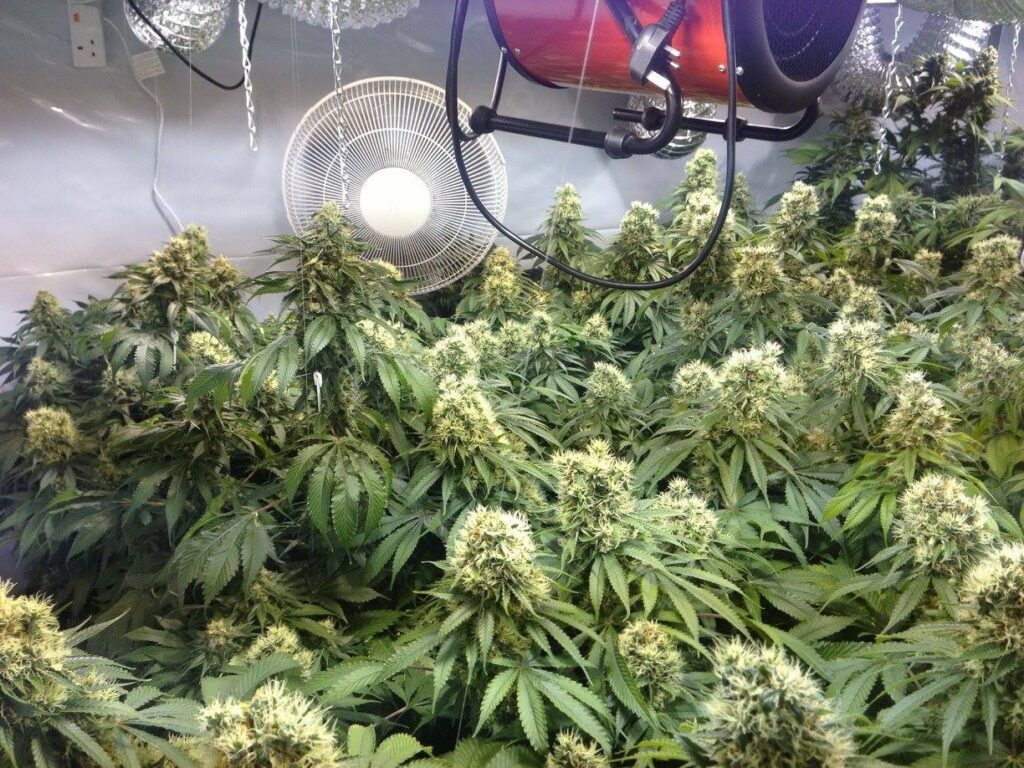
Get it wrong, and even the best genetics, perfect lighting and nutrition won’t save your yield. Check out our grow guide here.
Next up, in Blog Post 5: “Every Drop Counts – The Role of Water in Plant Growth” we will look at Water, the lifeblood of every grow.
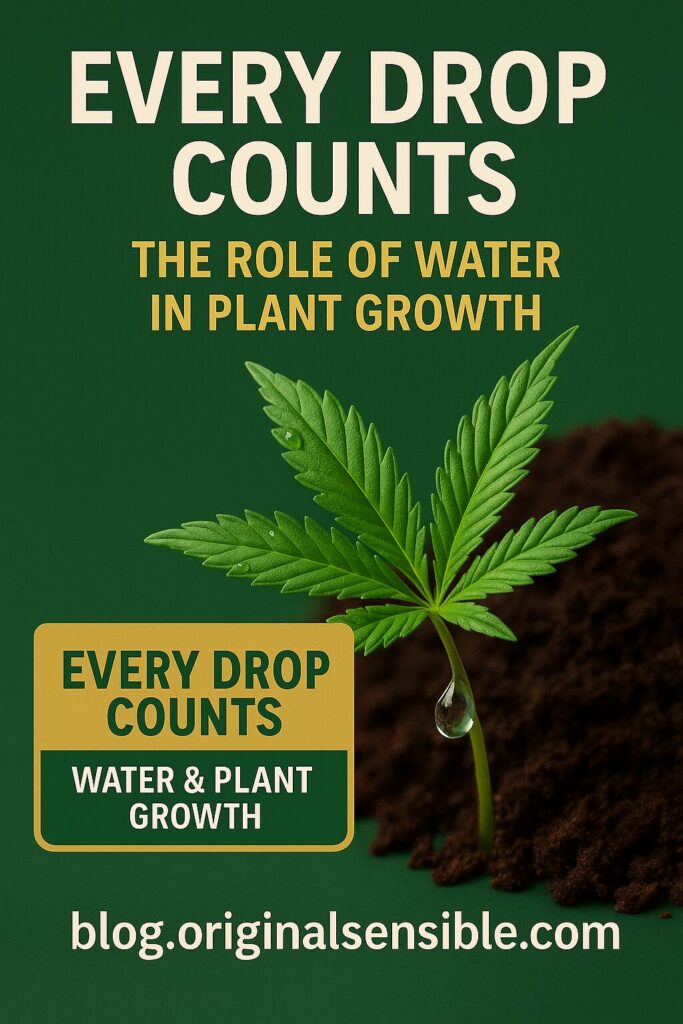
Sign up for early access and get expert content like this delivered straight to your inbox—before it hits the blog.




